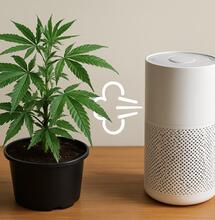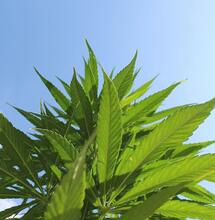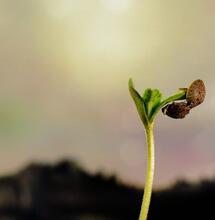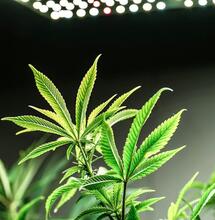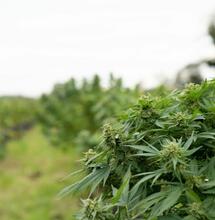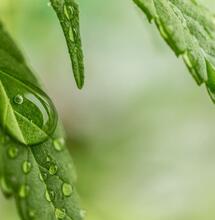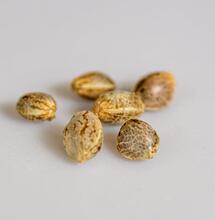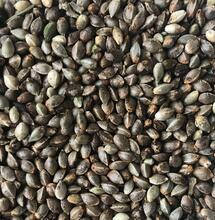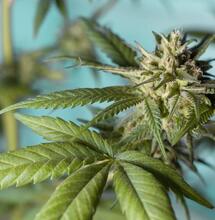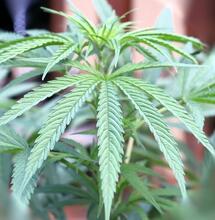Plant Propagation Essentials
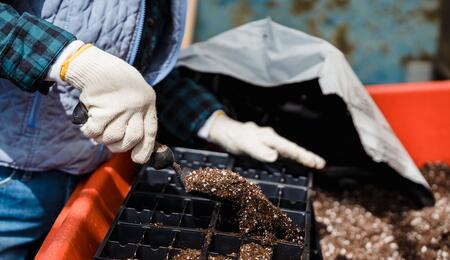
Cultivating strong, healthy seeds and clones will lead to flourishing, vigorous mature Cannabis plants. However, as you might guess, numerous factors play a role in the propagation process of cannabis plants. From cellular activity and how you handle cannabis seeds to how much moisture the young seedlings are exposed to, let’s look closely at seed starting.
Cannabis Seeds
Seeds are formed when male and female flower organs develop to maturity and pollen from the male organ comes in contact with a receptive female organ. The pollinated egg is a zygote, which grows into a tiny plant (embryo) encased inside an outer shell.
Seeds are impressive bits of biology that allow a plant to put tiny, dormant child plants in a protective casing. In general, garden seeds are comprised of three parts: a testa (seed coat) surrounding and protecting both the endosperm (nutrient storage) and a tiny child plant, known as the embryo. Small holes in the seed coat called micropyles allow moisture to seep through to the plant inside during germination. If moisture cannot pass into the interior of the seed, then germination cannot occur; this is why many seeds will benefit from being soaked in water for twelve to twenty-four hours before planting.
The endosperm (seed food storage) will supply the sprout with the energy and nutrients needed until it has developed a root system to absorb them from the growing medium.
The embryo (baby plant) is a tiny plant held in stasis until environmental conditions are conducive to sprouting. This is a complete plant, containing seed leaves (cotyledons) and a pair of growing tips (apical meristems); the growth tip at the top of the shoot will produce the first 'true' leaves and the one at the bottom will develop into the root system.
Temperature and Heat Mats
Many seeds sprout best in an environment that is a little warmer than room temperature. Seedling heat mats can help to fine-tune the temperature of a 1020 tray (ten-by-twenty-inch flats) by warming the tray.
TIP: Make sure there is a 'drip loop' between any electrical garden equipment and the electrical outlet to which it is connected. A simple loop (a loose twist-tie can be helpful) in the cord near the outlet will allow any condensation that collects on the cord to drop off before it reaches the outlet.
Light
Seedlings and cuttings require some light to grow, but are generally not ready for intense lighting. A single T5 light fixture can light a 1020 tray well enough to start seeds or cuttings, but additional lights may be added, if desired.
Domes
Plastic domes can be used to cover 1020 trays to raise humidity, promoting germination and early seedling or cutting development. If the tray becomes too humid, the dome may be offset or removed entirely for periods of time. Dry conditions make it more difficult to start seeds or cuttings, but overly-wet conditions are prone to pathogenic fungal growth. Domes are more commonly used in early stages of sprouting and rooting.
TIP: A crochet hook can come in handy when placing and arranging seeds. With care, the hook can even be used to gently draw roots through a starter cube.
Starting Seeds in Trays
Rooting cubes are a common way to start seedlings and clones. Starter cubes that fit into a cell insert that sits in a 1020 tray can be used. Once the cubes have been utilized, the cell inserts can be reused by purchasing replacement cubes, or the cell insert can be filled with a light potting mix.
TIP: Leaving one cell empty per tray makes checking the water level in the tray easier.
Meristem Cells
The basic building block of plants, meristem cells are undifferentiated and thus have not yet declared which type of cell that they will ultimately become. Meristem cells can create other meristem cells or they can become one of the other types of plant cells. Flowers, roots and shoots are all formed from meristem cells developing into other types of cells, based upon need and environment.
Although meristem cells can transform into different cells, once a cell type is declared it loses the ability to become a different type of cell. Taking cuttings, known as vegetative propagation, makes use of meristem cells in the stems of plants. The ends of the stems are put into an environment that encourages the meristem cells to become root cells. Learn in greater details about meristem cells in this article here.
Cuttings (Clones, Vegetative Propagation)
Cuttings should include both a shoot or apical meristem (growth tip) and a section of stem. When exposed to the proper environment, the undifferentiated meristem cells inside the stem can be triggered to develop into root cells instead of shoot cells, thereby making a new plant.
Until a new root system is developed, cuttings need a lot of moisture to survive and are particularly sensitive to drying out and terminally wilting. However, the stem must also not be kept too wet with non-aerated water, as fungal problems such as molds and root rot flourish in over-watered and under-aerated growth mediums.
To encourage the meristem cells to become root cells, a hormone auxin such as indolebutyric acid (IBA) or naphthaleneacetic acid (NAA) can be used to treat cuttings; such hormones encourage root growth over leaf growth. These auxins are commonly found in rooting powders, liquids and gels.
Since cuttings are grown from cells taken from a mother plant, they will be genetically identical (barring mutation) to that mother plant. This means that traits such as the flower color and gender of the plants started from cuttings will be the same as the original plant, therefore the common name 'clone.' This can be very useful when you want to start several plants that share traits in common, such as an all-female crop.
Moisture
While moisture is an essential part of starting seeds or cuttings, do not allow the starting medium to stay too wet for too long. Non-aerated, static moisture is conducive to fungal growth. Fungal problems such as 'dampening-off' and root rot are often associated with long-term over-watering. To prevent root rot, make sure the seedling medium is allowed to dry out slightly between waterings. Do not allow your media to dry out too much, however, as sprouts and cuttings can quickly dry out and die if not watered enough.
Transplanting
With the use of a soldering iron, opaque plastic cups can be quickly converted into seedling pots. The hot tip of the iron can be used to make neat, round drainage holes near the bottom. Writing the name of the variety and its start date on the cup can make record keeping easier.
TIP: When removing starter cubes from the tray, use a pair of table knives or putty knives inserted between the cube and the tray on either side of the cube (think chopsticks). This will allow the cube to be lifted from the sides instead of the top, causing less damage to the cube.
Also read on Soft Secrets:

